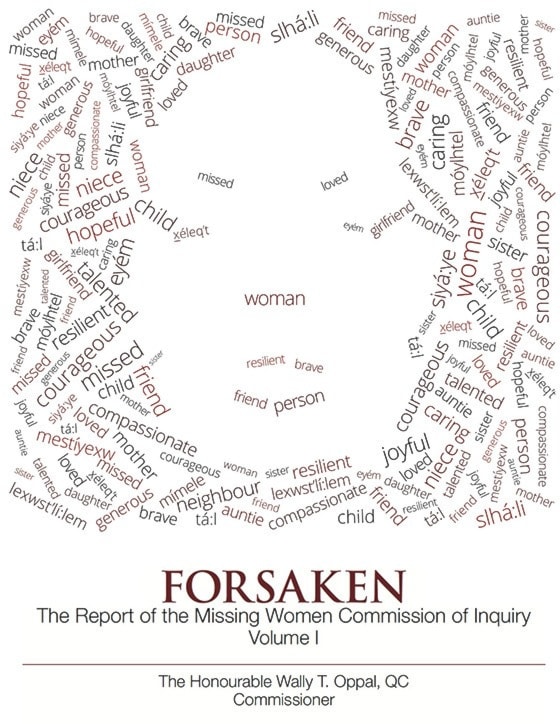The Missing Women Commission of Inquiry released a report on Monday, Dec. 17, examining the "phenomenon" of missing and murdered girls and women in B.C.
The 1,448-page report, titled Forsaken, analyzes the circumstances related to missing or murdered girls and women - many of First Nations descent - across the province.
The report largely focuses on the disappearances of more than 60 women, at least 26 of whom were murdered by serial killer Robert Pickton in Vancouver, over a 20-year period.
"The loss of life is staggering," wrote Commissioner Wally Oppal, a former B.C. attorney-general who directed the public inquiry.
The disappearances and murders of girls and women along the Highway of Tears, which are the subject of an ongoing RCMP investigation called Project E-PANA, is also reviewed extensively in the report.
"The number of missing and murdered girls in northern B.C. is unknown; people have been disappearing along the highway network of Highways 16, 97 and 5 for decades," the report says.
"The vast spaces between communities acutely increase women’s vulnerability to violence given the lack of public transportation, and create additional challenges to the initial search and investigation of missing persons."
Oppal recommended that an enhanced public transit system be developed "to provide a safer travel option connecting the Northern communities, particularly along Highway 16".
Minister of Transportation and Infrastructure Mary Polak said work on the public transit recommendation will get underway after the holidays.
“In the new year we will start targeted consultation at first involving stakeholders involved in regional transit like local government, community leaders and First Nations... Part of that is born out of the way regional transport operates in the province. Currently all regional operations do involve local governments,” she said.
“From that I think we'll be able to scope out an overall consultation strategy that is a bit broader. We're hopeful to have the initial phase concluded by the summer of 2013, and a key piece of that is to really get a handle on what could be done in the region. The good news is that a lot of work has already been done along the corridor and studying it.”
Polak also said she is aware of concerns about the impact a public transportation system could have on the operations of Greyhound, the only private bus service operating in northern B.C.
“It is something we will have to pay close attention to because we don't want to damage any of the existing services or reduce the level of those services.”
All five volumes of the report can be downloaded at Missingwomeninquiry.ca.
Shaun Thomas, editor of the Northern View, contributed reporting from Prince Rupert.
